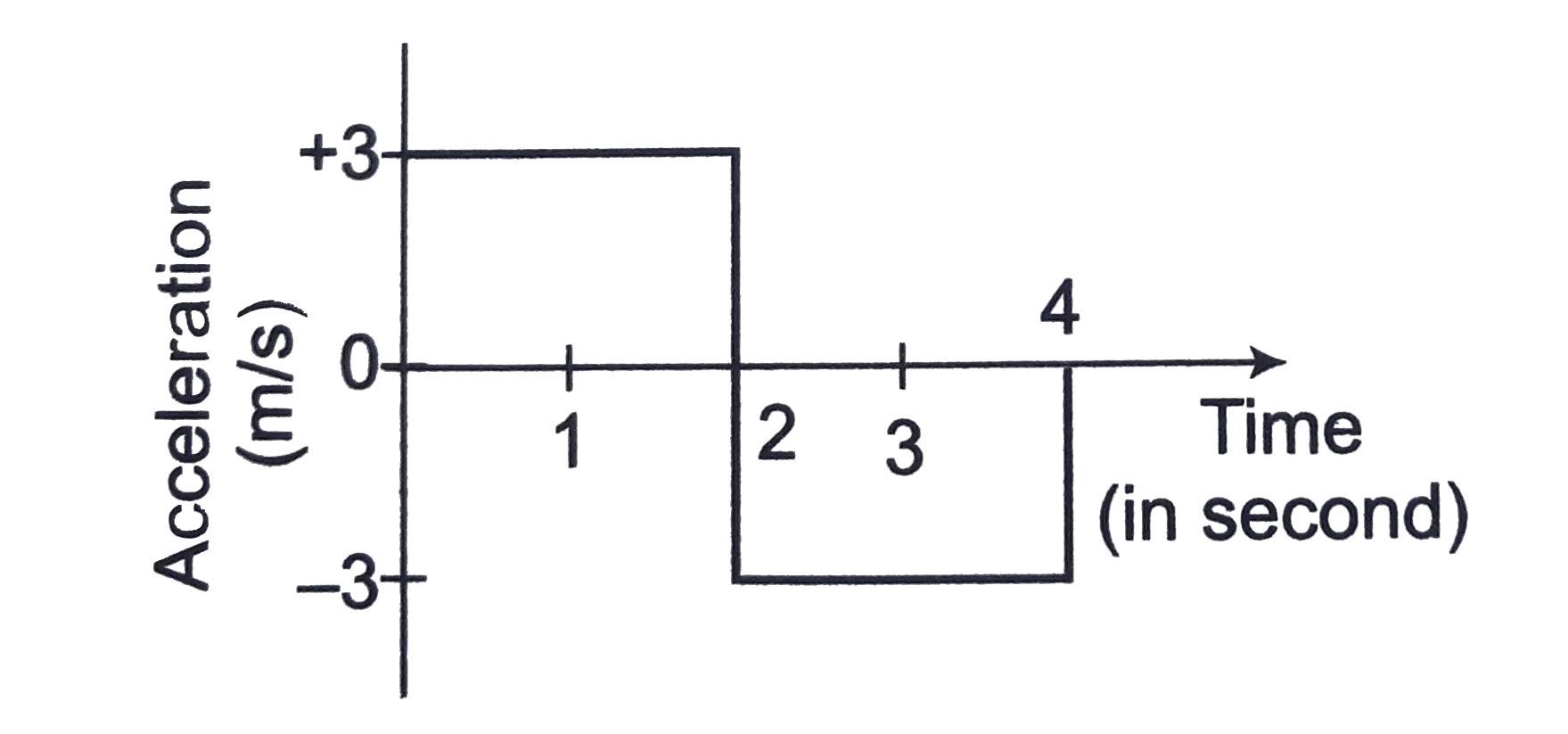At time t = 0, two bodies A and B at the same point. A moves with constant velocity υ and B starts from rest and moves with constant acceleration. Relative velocity of B w.r.t. A when the bodies meet each other is
υ2
υ3
υ
2υ
The correct Answer is:C
To solve the problem, we need to analyze the motion of both bodies A and B and determine the relative velocity of B with respect to A when they meet.
1. Understanding the Motion of Body A:
- Body A moves with a constant velocity VA=υ.
- The distance traveled by A after time t is given by:
SA=VA⋅t=υt
2. Understanding the Motion of Body B:
- Body B starts from rest and moves with a constant acceleration A.
- The initial velocity uB=0.
- The distance traveled by B after time t is given by the equation of motion:
SB=uB⋅t+12At2=0+12At2=12At2
3. Setting the Distances Equal:
- Since both bodies meet at the same point, we can set their distances equal:
SA=SB
υt=12At2
4. Solving for Acceleration A:
- Rearranging the equation gives:
At2=2υt
- Dividing both sides by t (assuming t≠0):
At=2υ
- Thus, we can express A as:
A=2υt
5. Finding the Velocity of Body B:
- The velocity of body B at time t is given by:
VB=uB+At=0+At=At
- Substituting the value of A:
VB=(2υt)t=2υ
6. Calculating the Relative Velocity of B with Respect to A:
- The relative velocity of B with respect to A is given by:
VBA=VB−VA
- Substituting the known velocities:
VBA=2υ−υ=υ
Final Answer:
The relative velocity of B with respect to A when the bodies meet each other is:
υ
- Body A moves with a constant velocity VA=υ.
- The distance traveled by A after time t is given by:
SA=VA⋅t=υt
- Body B starts from rest and moves with a constant acceleration A.
- The initial velocity uB=0.
- The distance traveled by B after time t is given by the equation of motion:
SB=uB⋅t+12At2=0+12At2=12At2
- Since both bodies meet at the same point, we can set their distances equal:
SA=SB
υt=12At2
- Rearranging the equation gives:
At2=2υt
- Dividing both sides by t (assuming t≠0):
At=2υ
- Thus, we can express A as:
A=2υt
- The velocity of body B at time t is given by:
VB=uB+At=0+At=At
- Substituting the value of A:
VB=(2υt)t=2υ
- The relative velocity of B with respect to A is given by:
VBA=VB−VA
- Substituting the known velocities:
VBA=2υ−υ=υ
The relative velocity of B with respect to A when the bodies meet each other is:
υ
Topper's Solved these Questions
- BOOK - DC PANDEY ENGLISHCHAPTER - MOTION IN A PLANEEXERCISE - (B) Meical entrance special format questions (Mathch the columns)6videos
MOTION IN A PLANE
- BOOK - DC PANDEY ENGLISHCHAPTER - MOTIONEXERCISE - Medical entrances gallery19videos
MOTION
- BOOK - DC PANDEY ENGLISHCHAPTER - PROJECTILE MOTIONEXERCISE - Level - 2 Subjective10videos
PROJECTILE MOTION
Similar Questions
Knowledge Check
- Question 1 - Select One
A body starts from rest and moves with constant acceleration for t s. It travels a distance x1 in first half of time and x2 in next half of time, then
Ax2=3x1Bx2=x1Cx2=4x1Dx2=2x1
Two bodies start moving in the same straight line at the same instant of time from the same origin. The first body moves with a constant velocity of 40ms−1, and the second starts from rest with a constant acceleration of 4ms−2.Find the time that elapses before the second catches the first body. Find the also the greatest distance between them prior to it and time at which this occurs.
View SolutionA particle starts from rest at t=0 and moves in a straight line with an acceleration as shown below. The velocity of the particle at t=3 s is
 View Solution
View SolutionTwo cars A and B start moving from the same point with same velocity v=5km/minute. Car A moves towards North and car B in moving towards East. What is the relative velocity of B with respect to A ?
View SolutionTwo cars A and B are at rest at same point initially. If A starts with uniform velocity of 40 m/sec and B starts in the same direction with constant acceleration of4m/s2,then B will catch A after :
View SolutionIn a car race car A takes t0 time less to finish than car B and pases the finishing point with a velocity v0 more than car B. The cars start from rest and travel with constant accelerations a1 and a2 . Then the ratio v0t0 is equal to
View SolutionA particle starting from rest moves along a straight line with constant acceleration for this velocity displacement graph will have the form-
View SolutionA man A moves due to East with velocity 6ms−1 and another man B moves in N−30∘E with 6ms−1 . Find the velocity of B w.r.t. A.
View Solution
